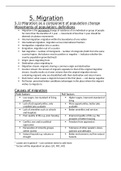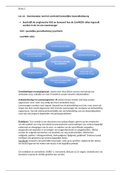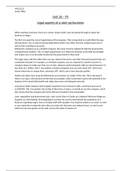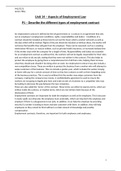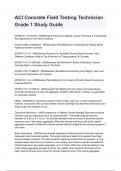Dear Samantha
I am writing to you from Smith & Jones as there has been a recent incident that involves Andrew
as as Louise. Andrew and Louise both are wanting to pursue a claim as they believe you were
negligent, and it is highly likely that you will be found liable. In this letter, I will explain to you the
most likely outcome and tell you why by explaining the law to help better your understanding.
Negligence is the act of failing to exercise the appropriate actions that are expected by a
reasonable person. The court will determine if you were negligent and if your negligence has
caused damages to others. To have a claim, the claimant must prove that have been negligent and
that your negligence caused harm. To prove negligence the claimant must prove three factors
which are, a duty of care, breach of duty, and if there was damage caused. I will explain these
individually and apply them to your case below.
Duty of care is the term used to refer to the obligations of an individual who owes a “duty of care”
to another induvial or a group. An example of this is a nurse and patient, a doctor must take care
of their patient and are responsible for them) or in your case, it would be a driver and pedestrian.
The driver (you) owes a duty of care to pedestrians, in your case, it would be Louise and Andrew).
A case used to define a duty of care is Donoghue V Stevenson (1932), it was ruled that the
defendant owed a duty of care to their neighbour, (neighbour test or neighbour principle). The
claimant’s friend bought a ginger beer for the claimant and when drinking it the claimant fell sick,
it was later discovered that there was a decomposing snail inside the drink which caused the
claimant to be very sick. The defendant was found liable, and this case is used constantly to
explain the duty of care. Another case is Robinson V Chief Constable of west Yorkshire, the
claimant was a 76-year-old woman who was injured when she was knocked to the ground by a
drug dealer trying to flee arrest. When the claimant was on the ground, two police officers
attempting to arrest the drug dealer fell on her. She filed a negligence lawsuit against the police.
The trial judge applied the Caparo test for duty of care and found that it was reasonably
foreseeable that the claimant would be harmed as a result of the officer's actions.The Caparo test
consists of three tests, to see if the incident was foreseeable if there is proximity in the
relationship, and if it was just, fair and reasonable. In your case you will check out to all three. This
because you could have foreseen the accident; The court will see that this was foreseeable as it is
illegal to drive whilst texting, this is due to the danger and risk factors involved when the driver
i.e., you, are not focused on the road ahead but rather on the content of their phone. Knowing this
there could be anything on the road. There could be anything on the road and if the driver is not
paying attention, there is a crash more likely to happen and other risks. Drivers must have their full
attention on the road ahead as it is their duty to the pedestrians, other drivers, and themselves to
take precautions whilst driving. There was enough proximity as you are the driver and Andrew is
the pedestrian and it will be seen by the court that applying this will be just, fair and reasonable.
Using precedent, we can refer it to your case, the court will see that you owed a duty of care to
the claimants.
The second factor is to see if there was a breach of duty, this basically refers to if you have
breached the duty of care owed. You owe a duty of care to the pedestrians as a driver, but you
have breached your duty and ended up causing them harm by being negligent. When determining
whether there was a breach of duty, the court will also consider whether there were any risk
factors that could either increase or decrease the standard of care expected. These factors include
whether or not the claimant has any special characteristics, the size of the risk, whether or not
appropriate actions have been taken, if or not the risks were known at the time of the accident,
and if there was a public benefit taking the risk. Special characteristics are considered if there is
1|Page
I am writing to you from Smith & Jones as there has been a recent incident that involves Andrew
as as Louise. Andrew and Louise both are wanting to pursue a claim as they believe you were
negligent, and it is highly likely that you will be found liable. In this letter, I will explain to you the
most likely outcome and tell you why by explaining the law to help better your understanding.
Negligence is the act of failing to exercise the appropriate actions that are expected by a
reasonable person. The court will determine if you were negligent and if your negligence has
caused damages to others. To have a claim, the claimant must prove that have been negligent and
that your negligence caused harm. To prove negligence the claimant must prove three factors
which are, a duty of care, breach of duty, and if there was damage caused. I will explain these
individually and apply them to your case below.
Duty of care is the term used to refer to the obligations of an individual who owes a “duty of care”
to another induvial or a group. An example of this is a nurse and patient, a doctor must take care
of their patient and are responsible for them) or in your case, it would be a driver and pedestrian.
The driver (you) owes a duty of care to pedestrians, in your case, it would be Louise and Andrew).
A case used to define a duty of care is Donoghue V Stevenson (1932), it was ruled that the
defendant owed a duty of care to their neighbour, (neighbour test or neighbour principle). The
claimant’s friend bought a ginger beer for the claimant and when drinking it the claimant fell sick,
it was later discovered that there was a decomposing snail inside the drink which caused the
claimant to be very sick. The defendant was found liable, and this case is used constantly to
explain the duty of care. Another case is Robinson V Chief Constable of west Yorkshire, the
claimant was a 76-year-old woman who was injured when she was knocked to the ground by a
drug dealer trying to flee arrest. When the claimant was on the ground, two police officers
attempting to arrest the drug dealer fell on her. She filed a negligence lawsuit against the police.
The trial judge applied the Caparo test for duty of care and found that it was reasonably
foreseeable that the claimant would be harmed as a result of the officer's actions.The Caparo test
consists of three tests, to see if the incident was foreseeable if there is proximity in the
relationship, and if it was just, fair and reasonable. In your case you will check out to all three. This
because you could have foreseen the accident; The court will see that this was foreseeable as it is
illegal to drive whilst texting, this is due to the danger and risk factors involved when the driver
i.e., you, are not focused on the road ahead but rather on the content of their phone. Knowing this
there could be anything on the road. There could be anything on the road and if the driver is not
paying attention, there is a crash more likely to happen and other risks. Drivers must have their full
attention on the road ahead as it is their duty to the pedestrians, other drivers, and themselves to
take precautions whilst driving. There was enough proximity as you are the driver and Andrew is
the pedestrian and it will be seen by the court that applying this will be just, fair and reasonable.
Using precedent, we can refer it to your case, the court will see that you owed a duty of care to
the claimants.
The second factor is to see if there was a breach of duty, this basically refers to if you have
breached the duty of care owed. You owe a duty of care to the pedestrians as a driver, but you
have breached your duty and ended up causing them harm by being negligent. When determining
whether there was a breach of duty, the court will also consider whether there were any risk
factors that could either increase or decrease the standard of care expected. These factors include
whether or not the claimant has any special characteristics, the size of the risk, whether or not
appropriate actions have been taken, if or not the risks were known at the time of the accident,
and if there was a public benefit taking the risk. Special characteristics are considered if there is
1|Page

